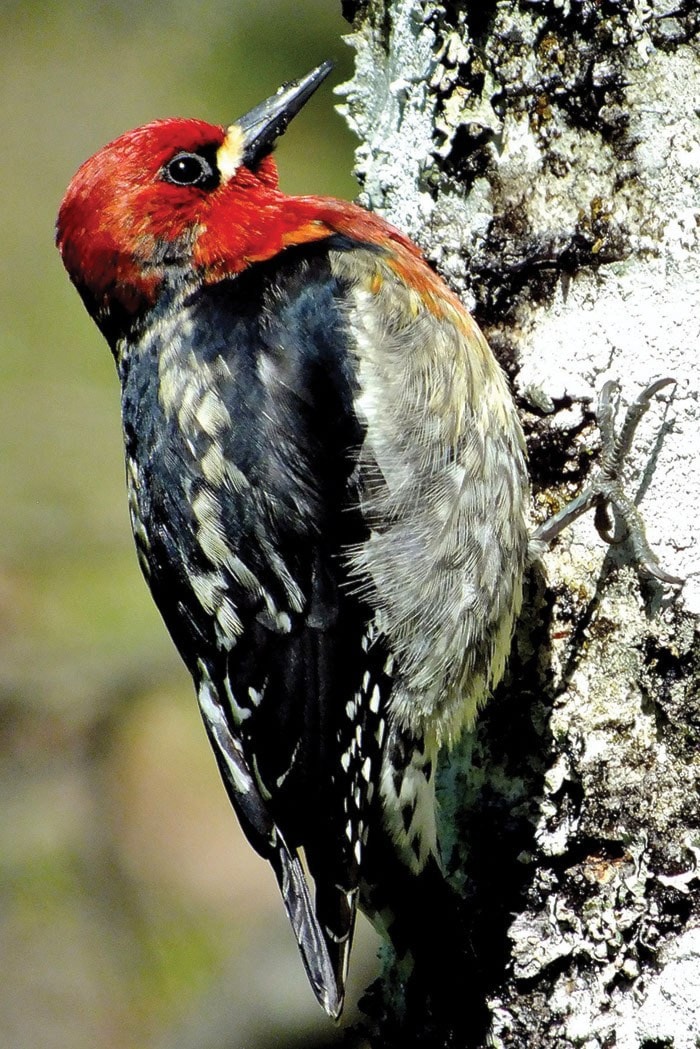Movie-star good looks and brilliant red head-dress earn this bird the avian equivalent of an Oscar, along with the French name ‘Pic a poitrine rouge’.
While touring the grounds at Haig-Brown House last week, Campbell River photographer Brian Kyle snapped a seldom-seen red-breasted sapsucker (only two were recorded during the last Christmas Bird Count).
The handsome, 20 cm (8 in.) Sphyrapicus rubers are year-round residents of the Pacific Northwest coast, although they may move south to warmer woodlands in winter, when tree sap ceases to flow.
Sapsuckers are the neat-freaks of the woodpecker world, drilling evenly-spaced rows of squarish “wells” into tree bark. The sap (sugar water) in the wells draws insects, providing the bird with a two-course meal: bug dinner and sap dessert.
Bark-foragers, sapsuckers get their protein fix by supplementing a sap diet with insects, spiders and fruit. It’s a horrifying fact, but they were once shot as orchard pests.
Contrary to what the name suggests, sapsuckers do not suck sap; instead, they lick it up with a fringed tongue tip. Each day, a sapsucker may drill up to 20 new sap wells, returning every few days to lick up the sweet rewards.
A sapsucker’s favourite tree may be full of holes. Look for a trunk with shallow pea-sized wells drilled in neat horizontal lines, each brimming with resinous sap. Butterflies and squirrels also dine at sapsucker larders, as do hummingbirds, that often nest near sapsucker trees.
Find Christine’s local trail book: Nature Campbell River, at the Campbell River Museum. E-mail wildernesswest@shaw.ca.
